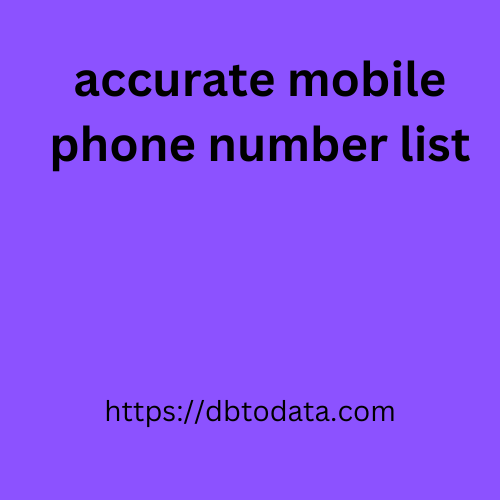A business can have many clients and sales, but no profit. Unit economics will help you understand why this happens. In this article, we will show you the current formulas and prove that doing the calculations is not difficult.
Unit economics is an analytical report that shows how much a company earns from one unit (customer, transaction, product). This tool is used by marketers, analysts, entrepreneurs and investors.
The report helps make important business decisions and optimize expenses. It can help you get answers to the following questions:
How much money is acceptable to how to build phone number list spend on attracting a client to generate income?
How many items do you need to sell to make a profit?
Which advertising campaign was successful and which went into the red?
Which products bring more profit? What should be removed from the assortment?
Does the business have the means to scale?
Unit economics is suitable for everyone, but the level of development and the number of metrics used directly depend on the field of activity. In this article, we will examine in detail how to calculate unit economics with specific examples.
What is important to know before calculating
In an attempt to understand all the nuances of unit economics, you have probably encountered a huge number of incomprehensible abbreviations and formulas. Their diversity is due to the use of unit economics in a variety of areas. Because of this, formulas with new variables appear. For example: when selling goods on marketplaces, additional metrics are added to the calculations, and the emphasis shifts towards detailed accounting of variable costs.
Another important thing to know is the difference between a “user” and a “client.” Unit economics came into widespread use during the boom of startups. That’s why it contains a lot of English-language terms that differ from some Russian concepts.
In unit economics, a customer is someone who has already made a purchase from you, and a user is someone who knows about the product but has not necessarily bought it. In the case of online cinemas, customers are those who have already paid for a paid subscription, and users have completed free registration but have not made a purchase. If we take the example of an online store, then customers are people who have paid for an order, and users are those who have left a request but have not bought anything.
Knowing this simple nuance will make it easier to understand the entire unit economy and some of its formulas.
Calculation formulas in unit economics
All indicators in unit economics are designated by English abbreviations: CAC, LTV, AC, UA, AvP, COGS and others. At the same time, they hide clear data – the number of attracted users, conversions, cost price of sold goods, etc.
We have previously discussed how to use the basic formula, and in this article we will delve deeper into the topic and consider all the important metrics. In unit economics, there are no more than 15 of them. Having figured out what is hidden behind the notations, you will be able to understand all the necessary indicators and apply them in practice.
How to calculate the cost of a unit
To accurately calculate the cost of a single unit, each company will have to select its own metrics for unit economics. Everything depends on the purpose of the event and what data you already have. The main metrics include UA, AC, C, CPA and CAC.
UA — number of users. It is best to calculate this indicator for each marketing channel separately. For example, you launched an ad with bloggers, from which 500 visitors came to the site.
AC — user acquisition costs.
If a company has only one product awb directory and the economy is calculated without dividing users into groups, then AC will be equal to the entire marketing budget. When calculating costs for specific users, for example, those who came from targeted advertising, the costs for advertising are taken into account.
C is the conversion rate, familiar to all marketers, the ratio of the number of visitors and customers. Conversion can be used to determine the effectiveness of the entire sales funnel and its individual stages. Let’s say 500 people visited your site and 15 made a purchase – in this case, the conversion rate will be 3%.
CPA — cost of user acquisition.
To calculate this important indicator for unit economics, you need to know: how many users were attracted (UA) and what amount was spent on their acquisition (AC). If you have already collected and defined this data — all that remains is to divide AC by UA. Let’s say you spent 100,000 rubles on marketing per month and attracted 2,000 users. CPA = 100,000 / 2,000 = 50 rubles. This is how much your company spends on attracting one user. Don’t forget that users are not customers yet!
CAC — customer acquisition cost. This unit economics metric only takes into account customers, i.e. those who have already made a purchase from you. CAC can be calculated using the formula:
How to calculate income per unit
To fully calculate the economy, it is important to know not only how much we spend on attracting users and clients, but also what income we receive from them. To do this, we need to calculate two more metrics – ARPU and ARPC. First, let’s look at what indicators are used to calculate them.
APC — displays the average number of purchases per customer over a limited period of time. Sometimes this metric is quite difficult to calculate, but for some types of business it is one of the most important. It is calculated very simply — the number of purchases made is divided by the number of customers. For example, 50 customers in total made 100 orders from you in a month. It turns out that the average number of purchases is 2.





